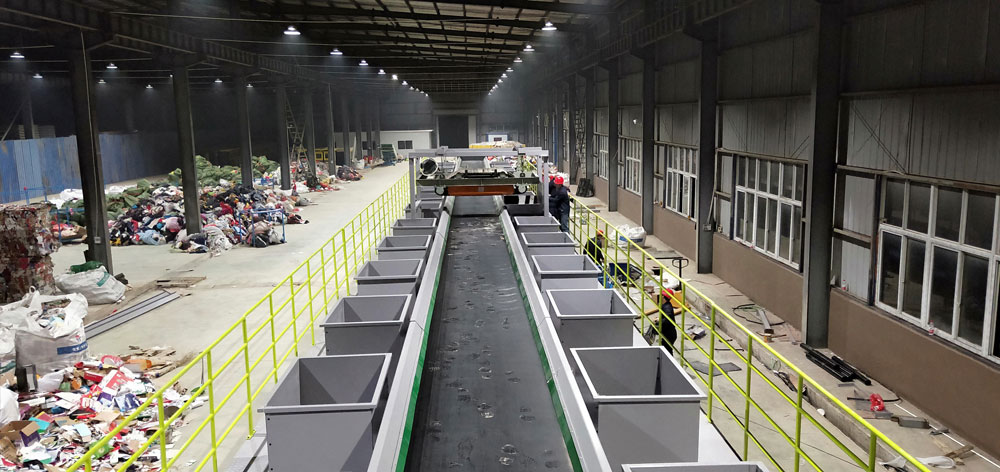 Time:2024-10-23
Time:2024-10-23
 Source:青绿环境
Source:青绿环境
During the renovation process, a variety of waste is generated, including a large amount of light impurities such as plastics, paper, and foam materials. These light impurities not only occupy a large volume but can also cause environmental pollution if not handled properly. Therefore, effectively sorting and processing light impurities in renovation waste is one of the key steps to ensure environmental protection and resource recycling. Here are several common sorting methods:

1. Manual Sorting
For larger or easily identifiable light impurities, preliminary screening can be done manually. Although this method is less efficient, it is practical for small-scale renovation projects. Workers must wear appropriate protective equipment (such as gloves, masks) to ensure their safety.
2. Mechanical Screening
Using vibrating screens or other types of screening equipment can greatly increase the speed and efficiency of separating light impurities from other heavier materials. By adjusting the mesh size of the screen, different sizes of waste can be effectively separated. This method is suitable for medium to large-scale construction sites.
3. Air Separation
Based on the principle of material density differences, air separation technology is also an effective means of separating light impurities. The system typically includes a feed opening, a fan, and multiple collection areas. Lighter materials will be blown by the air stream to specific areas, while heavier ones will fall onto another conveyor belt. This method is particularly suitable for handling large amounts of mixed waste containing fine particles such as dust and paper scraps.
4. Water Flotation Method
For certain specific types of waste sorting, the water flotation method can also be considered. By placing the waste to be processed in water, natural separation is achieved based on the different buoyancy characteristics of each component. For example, non-metallic materials such as wood and plastic will float on the surface of the water, while bricks and metal fragments will sink to the bottom. However, it should be noted that this method may generate additional wastewater issues that need to be properly handled.
5. Integrated Utilization
After completing any of the above sorting processes, the next step is to dispose of the various sorted waste reasonably. For recyclable parts, such as clean and uncontaminated plastic products, they should be sent to specialized recycling centers. For materials that cannot be directly reused but are not suitable for landfill disposal, they may need to go through pre-treatment steps such as crushing and compression before further arrangements are made.
In summary, it is very important to take scientific and reasonable sorting measures when dealing with renovation waste. This not only helps to reduce environmental pollution but also promotes the maximum utilization of resources. At the same time, with the advancement and development of technology, more efficient and energy-saving new methods will be applied to this field in the future.













 Prev
Prev











